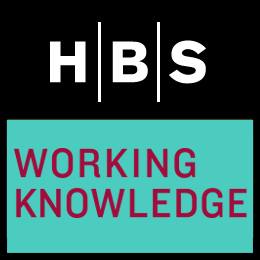Investment Banking and Delisting
Investment Banking and Delisting
It is common knowledge that investment bankers help a company when they want to list their shares on the stock exchange. This process is called listing, and there are hundreds of companies that undertake this process every year. However, the opposite of this process also happens. This means that companies that are already publically listed also tend to go private. This process is called delisting and happens much less frequently. However, just like delisting, this process also requires the services of an investment banker.
In this article, we will have a closer look at what delisting is and how investment bankers help in the process.
What is Delisting?
Delisting means that the shares of the company will no longer be traded on the stock exchange. This could happen either voluntarily or involuntarily. Stock exchanges have certain criteria that need to be met in order for the companies to remain listed. For instance, they have to pay an annual listing fee, must maintain a certain amount of turnover, and must comply with the rules and regulations of the exchange. If they fail to do so, they can be delisted forcefully by the exchange. Such a delisting is called involuntary delisting.
Compared to this, many companies decide to get delisted by their own wish. This is because delisting allows them to keep their records private and provides some other benefits as well. This is called voluntary delisting. In the balance of this article, we will provide details about the voluntary delisting process as well as the role of investment bankers in the process.
Delisting Procedure
Companies that want to delist their shares have to enlist the services of an investment bank. This is because, just like listing, delisting is a complicated legal procedure. There are many regulations that need to be complied with. As such, there is a need for the services of an investment banker who is well versed with the processes that have been put into place.
Reverse Book Building
The delisting process happens via a procedure called reverse book building. In the previous article, we have already studied how investment bankers use the book-building process in order to list the shares. However, in this article, we will learn about how the process works in reverse.
During the reverse book-building process, the positions of buyer and seller are interchanged. This means that the company is the buyer for their own shares instead of being the seller. On the other hand, the investors who earlier bought the shares will now be the sellers. The reverse book building process is done to allow for efficient price discovery during the delisting process.
- Threshold for Delisting: Every exchange defines a threshold for the number of shares which the company needs to own in order to be able to delist their shares. For instance, if the minimum amount of shares to be delisted is 90%, then the company will have to buy 90% shares. If the promoter of the company already controls 50% of the shares, then they will have to acquire the balance 40% from the market. If the company owns 89% of the shares, it still cannot delist.
- Floor Price: The next step of the process is that the company has to open the dates for bidding. A time period of a week or so is allowed for bidding. Now, here the bidding works in reverse. Sellers are bidding to sell their shares. Hence, they will try to quote the highest price. The company has to provide the floor price for bidding. Exchanges often have regulations that regulate how this price is decided. For instance, some exchanges have regulations that the floor price should not be less than the weighted average of the share price in the last six months.
- Cut-Off Price: Once the company has provided the floor price, the company asks investors to provide bids at their expected prices. This is where the reverse book building process begins. Investment bankers create a schedule of shares that are available for purchase at different prices. Then, they find the cut off price just like in the book-building process. This price is then announced to the public, and finally, all shares are purchased at the cut-off price.
Example: If a company wants to buy 300 shares, it receives 4 bids of 100 shares each for $10, $12, $14, and $16. Here if the company pays $14, then they can purchase 300 shares. Hence, all shareholders who bid below $14 will have their shares acquired at $14 per share. Hence, $14 is the cut-off price. The process is exactly like book building, but it works in reverse.
- Option to Not Delist: It is possible that all the shareholders start asking for exorbitant prices in order to sell their shares. Hence, it is important the company not be contractually bound to complete the delisting even though it has announced the process of delisting. This provides an incentive for the sellers to put in rational bids. If the company finds the bid to be too high, it can simply choose not to delist, and the entire process can be stopped.
The bottom line is that delisting is also an important opportunity for investment banks. This is because it is used by many companies to consolidate control back into the promoter’s hands.









